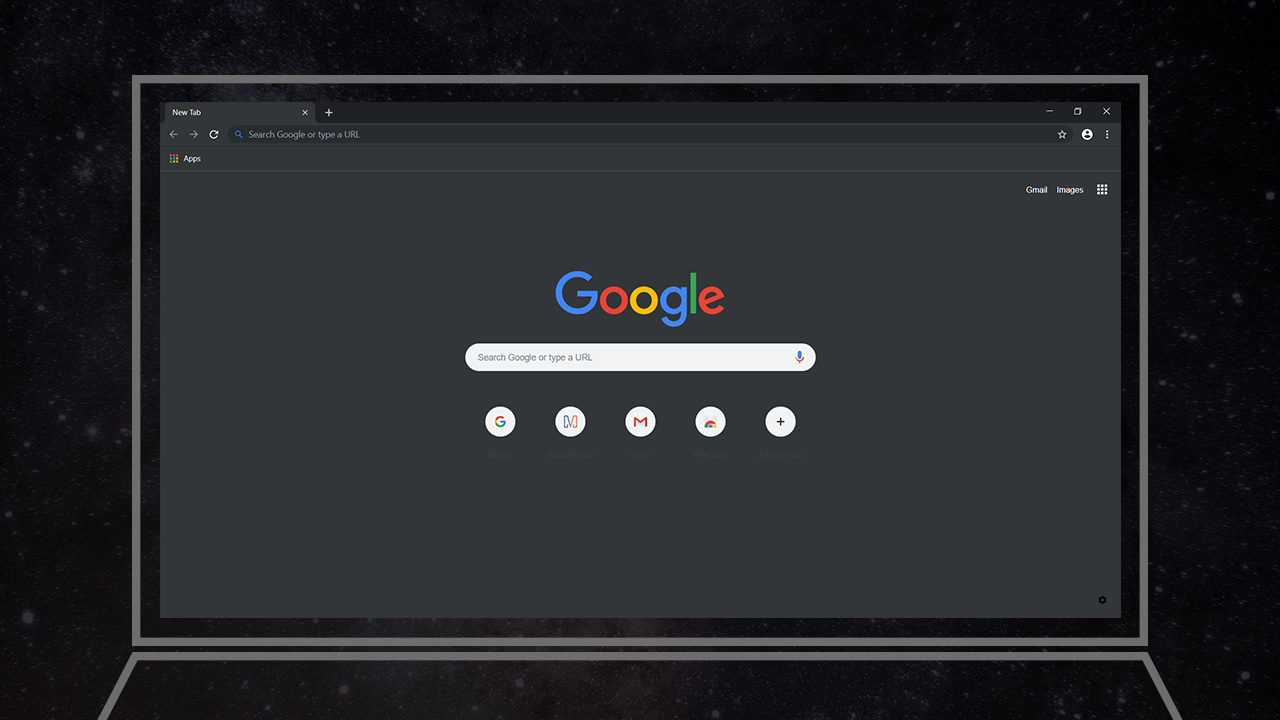
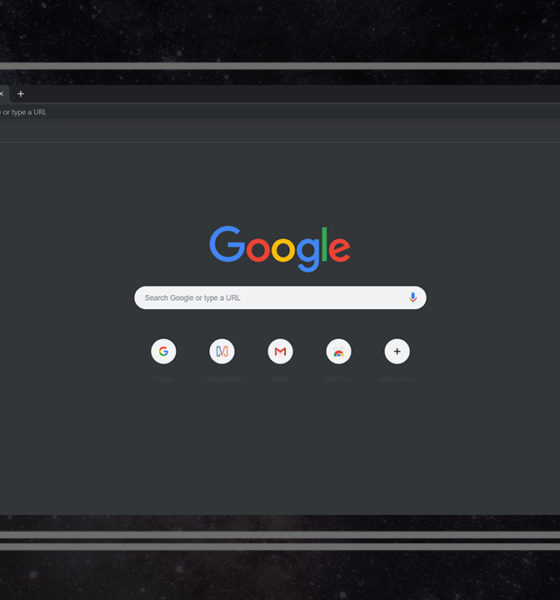
Dark mode is not new, but it’s becoming really popular. With more people appreciating how easy it is to the eyes with a dark background, we get flooded with questions asking how to activate this mode. Facebook recently rolled out its dark mode feature for its popular Messenger app, which triggered the curiosity of clueless users.
Another well-known desktop application will soon have its official dark mode: Google Chrome. There’s no exact release date yet for the browser’s upcoming feature, but there are ways to experience it now. If you use Chrome, you might find these tips very useful.
Apply “Just Black” theme
There are a lot of black or dark themes on the Chrome Web Store. Even before dark mode was a thing, black themes were already available for Chrome, at least for its desktop version. Although, not all dark themes are created equal. There are some that aren’t dark enough and some are too complicated.
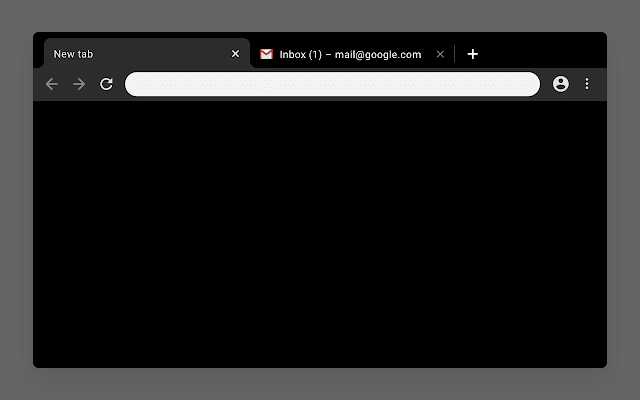
Just Black theme | Image credit: Google
Thankfully, there’s no need to dig inside the Themes section of the Web Store because Google has its own dark theme called Just Black. The theme is available to download for free and it’s one of the 14 official themes made by Google’s Chrome team.
Like other themes available in the Web Store, the Just Black theme skins the surface of the browser including the title bar, start page, and tabs. What’s not darkened are the drop-down menus and the settings panel. If you want a deeper dark mode, check out the next option.
Try out Google Canary
In order to try out the official dark mode that’ll come to Chrome in the coming months, you’ll have to be adventurous and “get on the bleeding edge of the web.” I’m not talking about Chrome Beta or Chrome Dev; the official dark mode is in such an early stage that you’ll have to download Chrome Canary. This version of Chrome is experimental, but it’s usable.
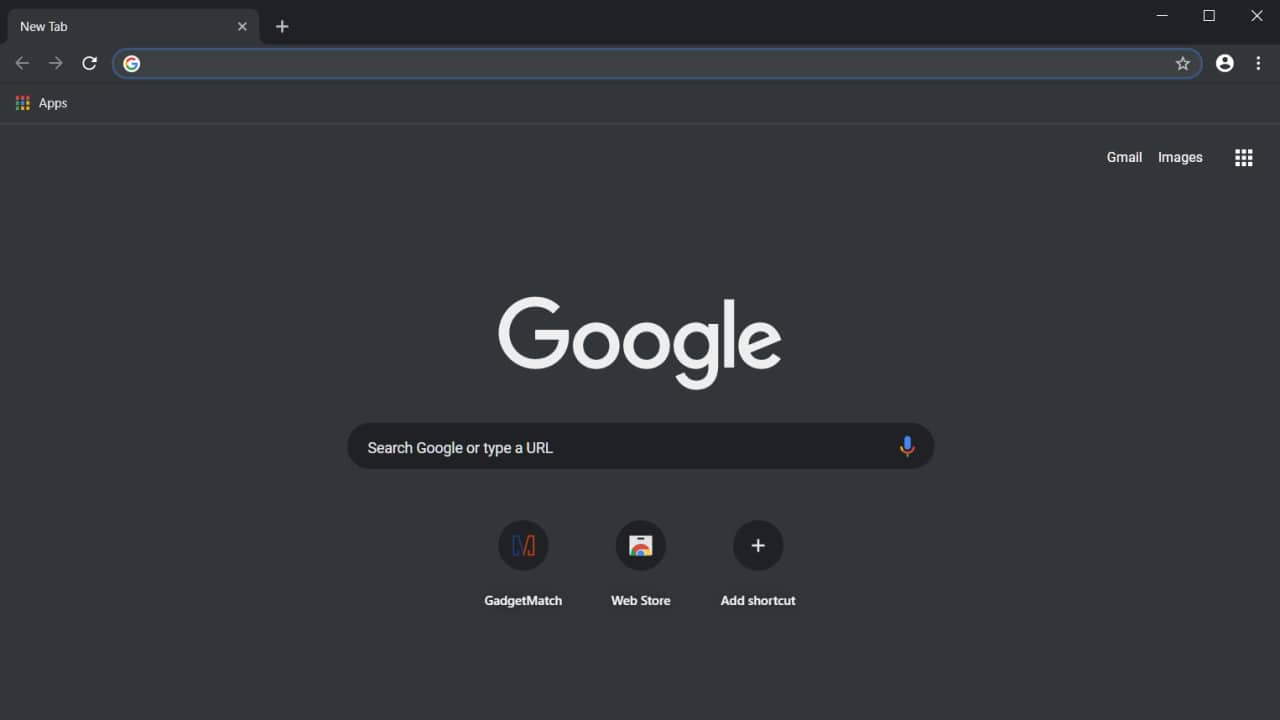
Chrome Canary 74 in dark mode | GadgetMatch
Canary’s dark mode is dynamic and it adjusts accordingly to your operating system’s setting. Both Windows and macOS have their respective dark options, so you’ll have to turn them on in order to activate Canary’s dark mode.
As mentioned, the official dark mode of Canary goes deeper, which means even the settings panel and menus are darkened. It’s slightly different from the Just Black theme and is more similar to the dark mode of Android Pie and YouTube. The official dark mode has gray tones with blue highlights.
Chrome Canary can be very unstable, but it gives you an early look at the upcoming dark mode for Google’s well-loved browser.
Go incognito
One of the earliest and easiest tricks to enjoying a dark-themed Chrome is to hit Ctrl+Shift+N or select “New incognito window” from the browser’s menu. Incognito mode has been around for years and it saves us a trip to the delete button in the browser’s History section. 😉
If you’re using the default theme of Chrome, the instant dark theme of incognito also helps in distinguishing which of your Chrome windows is not recording your visits.
Bonus: Dark mode for all websites
Even if your theme is now dark, it doesn’t mean that the websites you’ll visit will darken as well. Most websites today have a plain white background (like ours) which means it’ll contrast with your dark theme. If you prefer to make the websites dark as well, there’s an extension for that.
The extension is aptly called Dark Mode and it’s free on the Chrome Web Store. It adds a toggle beside the browser’s omnibar. It works on most websites, but it’s not perfect in some cases. Still, it helps reduce eye strain when you’re browsing a website in the dark.
SEE ALSO: Here’s how you can enjoy Dark Mode on Facebook Messenger

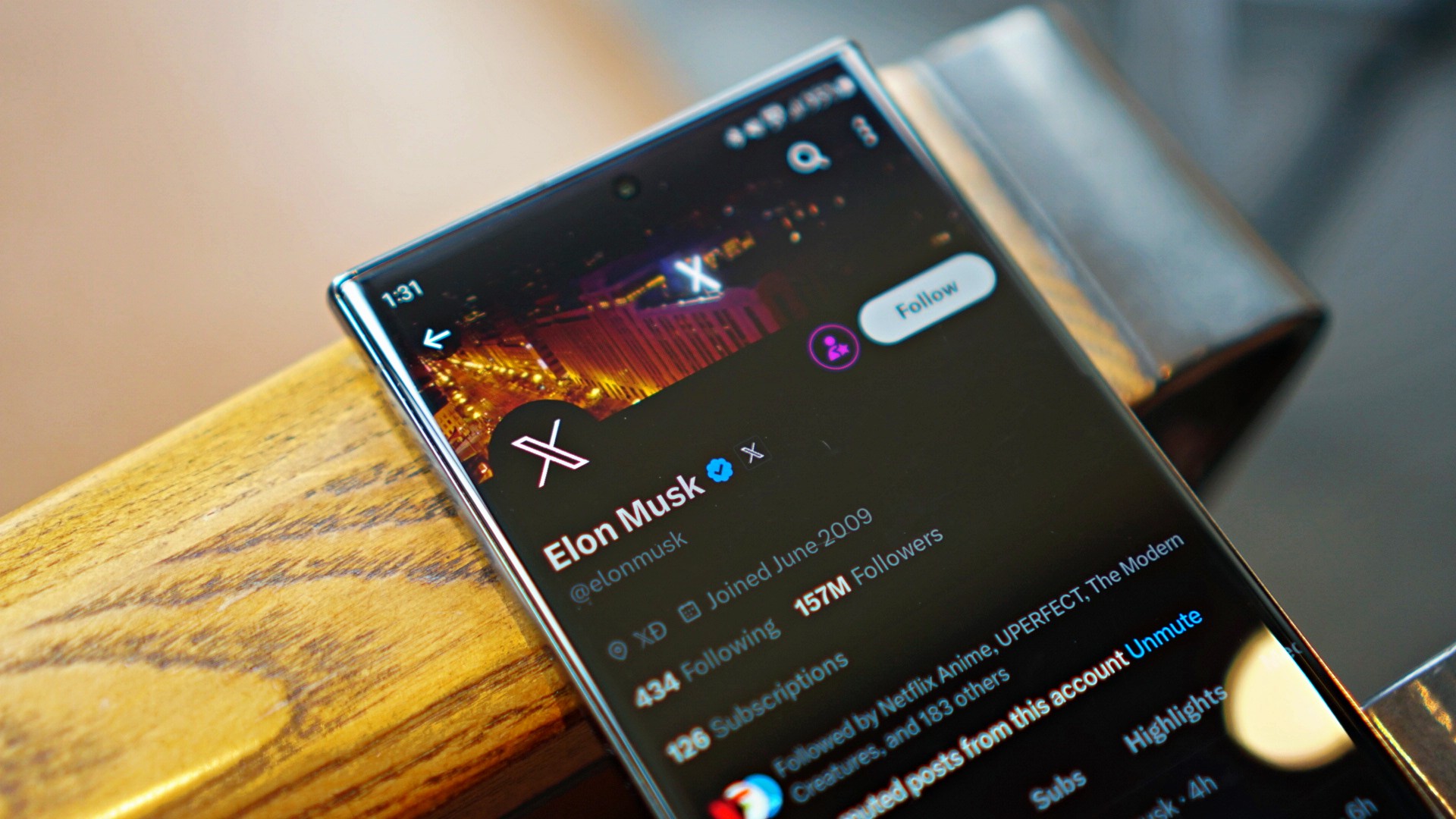
New users on X might soon face a tough time on the platform. The social media website will likely start charging new accounts a small fee for the right to post on the platform.
Now, the fee isn’t a new one. Almost six months ago, the company tested the paid system in New Zealand and the Philippines. New users in those countries had to pay a dollar per year for the ability to post and reply to content.
As spotted by X Daily News on the same platform, the company might be ready to take the experiment to a larger market. New text strings have shown that the policy is rolling out worldwide.
SPECULATION: X might be expanding its policy to charge new users before they reply/like/bookmark a post https://t.co/odqeyeiHBx pic.twitter.com/EU71qlwQ0D
— X Daily News (@xDaily) April 15, 2024
The policy is designed to combat a wave of bots appearing on the platform. By preventing new accounts from creating posts, X hopes to stave off the standard behavior of bots these days. You might have noticed them as OnlyFans creators in unrelated posts, peddling NSFW content on their bio.
Though the global rollout was only just spotted, owner Elon Musk has seemingly confirmed the change. Replying to X Daily News, Musk says that it is “the only way to curb the relentless onslaught of bots.” He says that the current breed of bots can easily bypass simple checks these days.
Apps
Disney+ might get always-on channels similar to cable TV
Featuring content from Marvel, Star Wars, and classic Disney
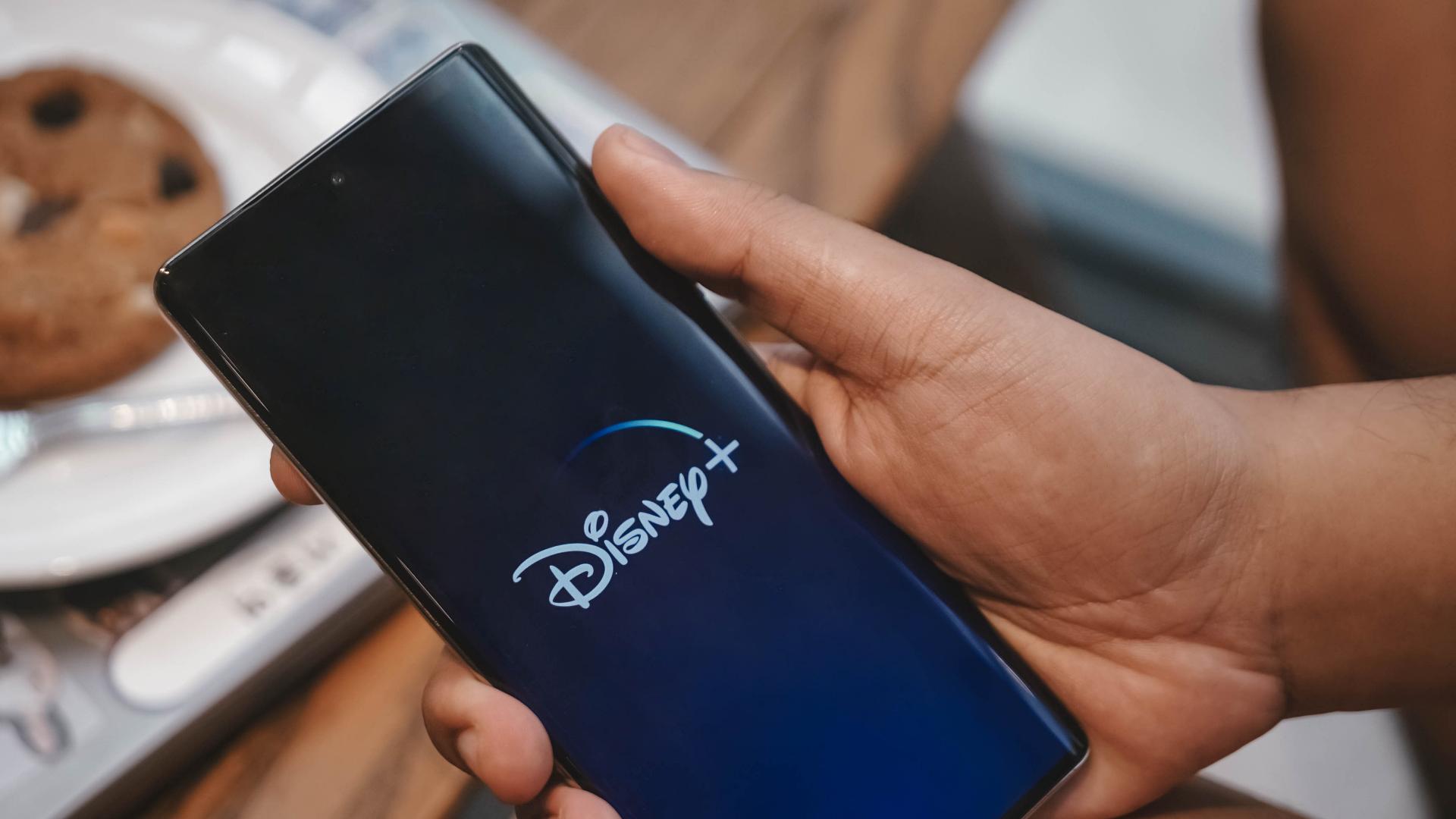
The burden of choice on streaming platforms is real. If you’re like us, you’ve spent hours just mindlessly scrolling through titles on Netflix or Disney+ without watching anything. Netflix, at least, has a Play Something button to fight off that irresistible urge. Now, Disney+ is reportedly trying something different: always-on channels.
If you already cut cable from your lives, you’re likely missing traditional channels or networks that have pre-determined programming. It was a flawed system that eventually ended up with mediocre content and a downpour of ads. However, cable did allow us to keep watching without deciding what comes next.
Now, according to The Information, Disney+ is working on adding those channels to its streaming service. Naturally, these channels will include content from the platform’s library such as Marvel, Star Wars, and its list of classic animated films.
Strangely, the reported feature might still have ads in between programs. Though the addition of ads does mean a better similarity with real television, users still have to be paying subscribers to access the channels. Even if you’re already paying for Disney+, you might still get hit with ads.
Disney has not confirmed the reports yet. The platform might launch a version of the feature outside of the scope included in this report. It’s also unknown when these always-on channels will launch.
SEE ALSO: Macross to be available on Disney+
A few years ago, Apple unleashed one of the most interesting features for the iPhone today: Emergency SOS. Designed for those who like their fair bit of the outdoors, Emergency SOS allows users to contact emergency services without network coverage. Other manufacturers, however, are struggling to adopt the same feature. Now, Google might soon join Apple in providing satellite connectivity for its users.
Despite the convenience, satellite connectivity hasn’t taken off as much as the industry expected it to. For one, a network of satellites isn’t the easiest thing to maintain. Apple is still currently offering its services for free, a gamble that may or may not pay off. Now, the iPhone maker won’t be alone.
According to Android Authority, Google might start offering the same service to Pixel 9 users. Starting with this year’s upcoming flagship, the company is reportedly teaming up with T-Mobile to create satellite connectivity for its users. The telecommunications network is teaming up with SpaceX for the feature.
The same report describes how the feature might work. Once activated, the feature will ask users of their situation: is everyone breathing, are people trapped, are weapons involved, among others. The phone will then relay this information to emergency authorities for a rapid response.
Unfortunately, pricing remains a mystery. While Apple is still offering its satellite connectivity for free, other brands might put the burden of cost on the end user. Hopefully, they won’t, but a paid version is unfortunately expected at this point.
SEE ALSO: Should you be excited for Apple’s satellite connectivity?
-

 Accessories2 weeks ago
Accessories2 weeks agoApple Vision Pro Review: Two Months Later
-

 Features5 days ago
Features5 days agoFortify your home office or business setup with these devices
-

 Gaming1 week ago
Gaming1 week agoThe Rogue Prince of Persia looks like an ultra-colorful roguelite
-

 Events1 week ago
Events1 week agoStellar Blade: PlayStation taps cosplayers to play Eve for game’s launch
-

 Accessories1 week ago
Accessories1 week agoLogitech unveils G Pro X 60 gaming keyboard: Price, details
-

 Gaming1 week ago
Gaming1 week agoStar Wars Outlaws release date revealed
-

 Philippines2 weeks ago
Philippines2 weeks agovivo Y100 to release in Philippines on April 27
-

 Deals2 weeks ago
Deals2 weeks agoSamsung Awesome April: Deals on Galaxy A series



























